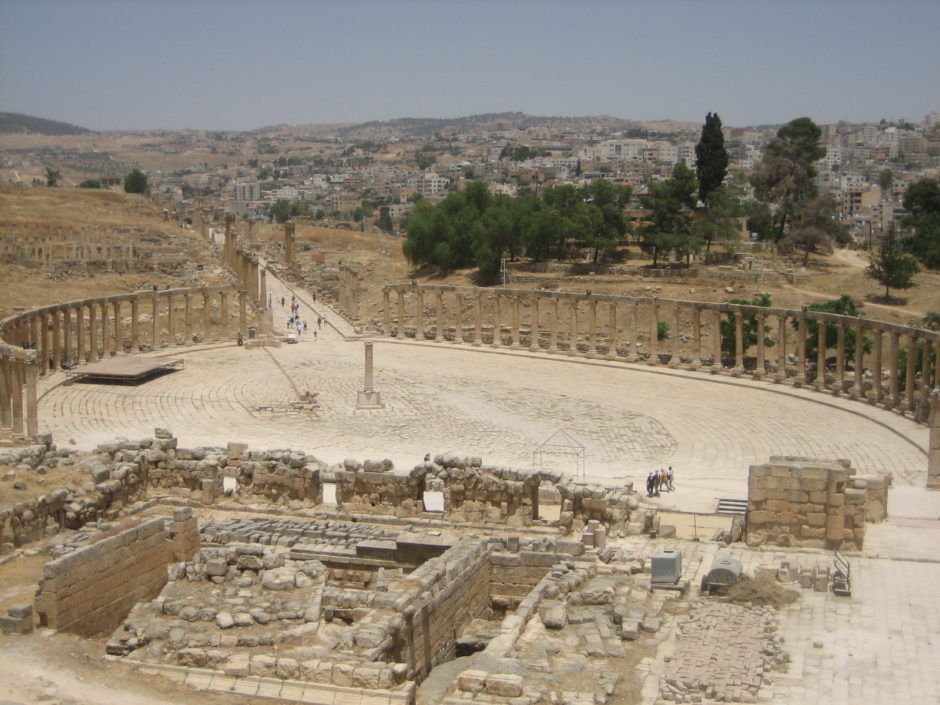The glory that was ancient Greece and Rome reveals itself in the ruins of Jerash, the largest Greco-Roman archeological site in Jordan.
Forty eight kilometres north of Amman, Jordan’s capital, Jerash was founded as a Greek city by Alexander the Great in the fourth century BC and was conquered by the Romans in 63 BC. Originally known as Gerasa, it flourished as a commercial center during the centuries of Roman rule.
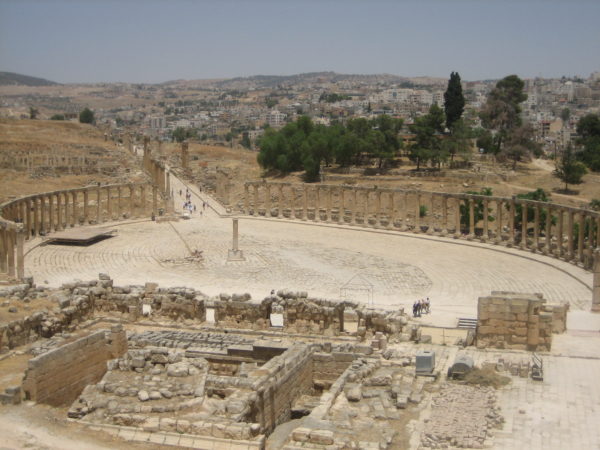
After the Romans incorporated it into the province of Syria, Jerash was primarily inhabited by Syrians, but had a small Jewish community, according to the Jewish historian Josephus. In 106 AD, Jerash was absorbed into the Roman province of Arabia, which included the city of Philadelphia, known today as Amman.
Jerash was destroyed by an earthquake in 749 AD, but in the 13th century it was occupied by the Crusaders.
In 1806, Jerash was rediscovered by the German explorer Ulrich Jasper Seetzen, but excavations did not begin until 1925. Digs turned up a tantalizing tableau of temples, churches, ceremonial gates, colonnaded avenues and theatres, establishing Jerash as one of the finest antiquity sites in the Middle East.
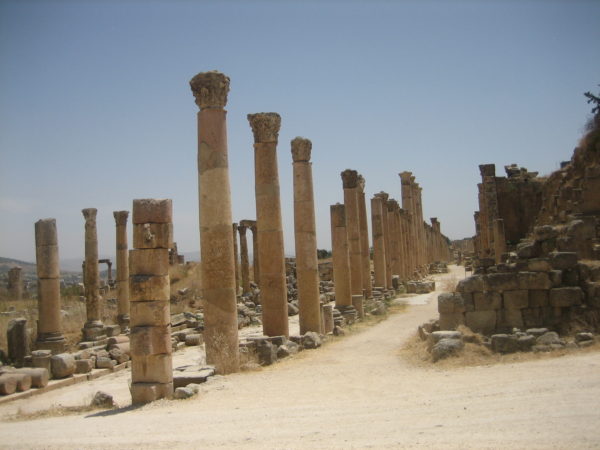
Astonishingly enough, about half of Jerash still remains buried under soft sand and gravel, its riches waiting to be uncovered.
Spread out in a valley and surrounded on all sides by the modern city Jerash, population 50,000, it ranks as the second most important tourist attraction in Jordan after Petra, the famous Nabatean city in the southern part of the country.
Under a broiling sun one early afternoon last spring, I toured Jerash, spending a little more than two hours here. I was never less than impressed by the scale of its magnificence.
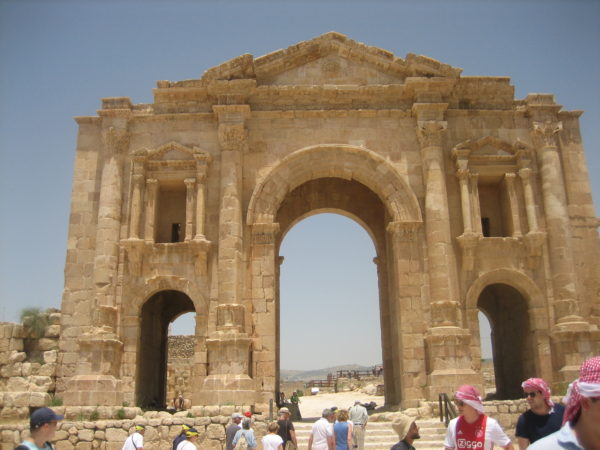
The first monumental sight that greets a visitor is Hadrian’s Arch, or the Triumphal Arch, an ostentatious limestone monument eleven meters in height. It was built in 129 AD in honor of the visit of the Roman emperor Hadrian.
Beyond the arch are the remnants of shops and the hippodrome, where chariot races took place in front of thousands of spectators. Almost 300 meters long, it is one of the world’s best preserved hippodromes. One imagines that a chariot race, such as the one so thrillingly depicted in the movie Ben Hur, could have unfolded here.
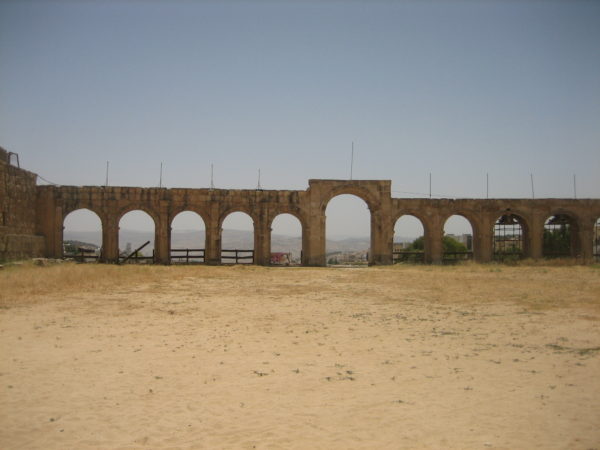
The South Gate, one of four gates originally constructed along Jerash’s outer wall, leads into the city. Like Hadrian’s Arch, it juts eleven meters into the sky.
The Forum, 90 meters in length and 80 meters across at its widest point, was at the center of life in Jerash. Crowned by 56 Ionic columns, it is close to several important sites — the Temple of Zeus, an elegant structure accessed by a steep staircase; the Cardo Maximus, the city’s chief thoroughfare, and the remarkable South Theater, with a seating capacity of 5,000.
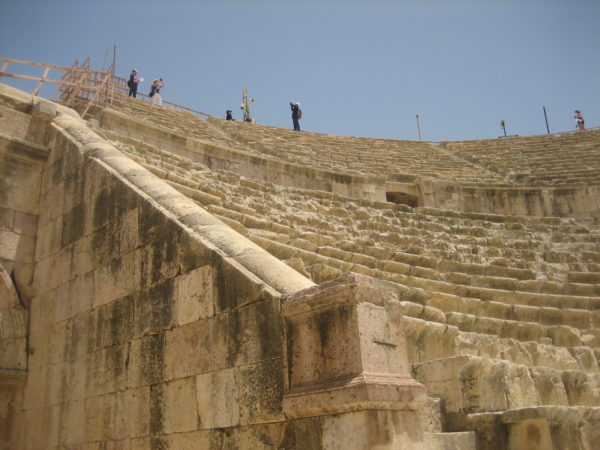
Jerash’s main fountain, the nymphauem, is within easy walking distance of the Temple of Artemis, which is stunningly beautiful and offers a panoramic view of the ruins.
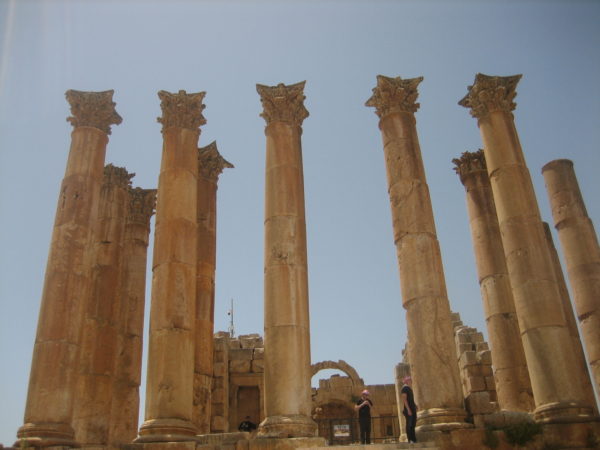
As I gazed upon this shattered city that was once a place of power and influence, I could not but think that nothing can be taken for granted in a world of constant change, turmoil and upheaval.
